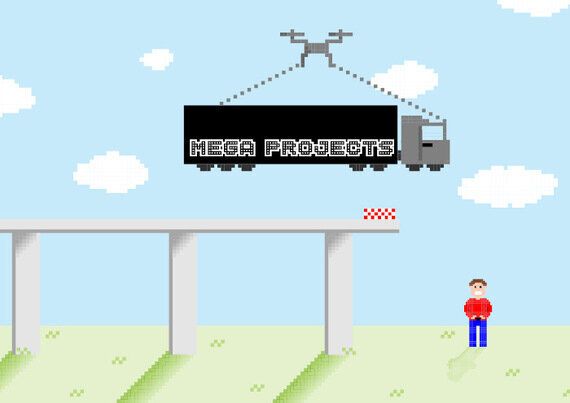
In the early hours of 17 November 1869, British Captain George Nares expertly navigated the HMS Newport past the queue of sleeping ships, through the quiet, inky Egyptian air, and slid seamlessly into the front of the line. When dawn broke, the French l'Aigle crew was horrified to find the British Navy would be the first to sail the Suez Canal, a mega project of its day linking African waterways to the Mediterranean Sea. What was it that drove Captain Nares to risk such a daring feat? Nothing less than the same stuff of all great men: courage, vision and a reckless perseverance to pioneer what once seemed impossible.
The Suez Canal changed the course of trade and industry forever. Equally audacious was 1914's Panama Canal, which forged alliances and pried the world open. And since 1936, USA's Hoover Dam has supplied a three-state radius with nearly 1.5 million kilowatts of power. In Australia, the Snowy Mountains Hydro-electric Scheme and irrigation complex, commencing in the 1950s, changed the face of agriculture and power generation. Projects of such ferocious vision and scale reshuffled the deck for nations in 20th-century world economy. Earlier iconic projects such as Big Ben (1859), the Statue of Liberty (1886), the Eiffel Tower (1887), and the London tube network (1863) are today semiotic celebrations of culture and nationalism.
So the question begs asking, where are today's projects, backed by a vision so bold, that we're willing to travel by night and face the dark?
The Crossrail in the UK may be one. Connecting over 40 stations in London via a high frequency, high capacity service that will make travelling in the capital easier and quicker, and will reduce crowding on London's transport network, its website says "Welcome to the future..."
The Square Kilometre Array (SKA) could be another. A global, next-generation radio telescope project involving institutions from over 20 countries, the SKA will be the largest and most capable radio telescope ever constructed and, during its 50+ year lifetime, it will expand our understanding of the universe and drive technological development worldwide.
But what if the projects of tomorrow are off the Google Earth grid and don't bear a plaque at the front gate? What will they look like?
Bits for bricks, bytes for mortar
Our digital landscape is invisible. Muscle and machinery have been replaced with qubits and quantum mechanics. Take the large Hadron collider, the world's largest and most powerful particle collider and experimental facility ever built, which will allow physicists to test the predictions of different theories of particle physics and advance human understanding of physical laws. Or France's International Thermonuclear Experimental Reactor (ITER) - a collaboration between 35 nations to build a magnetic fusion device that will explore the feasibility of harnessing the same carbon-free energy that powers the stars. These projects and others hold galactic implications to usher in a completely new technological age.
An integrated worksite
The mind of the engineer has always been central to a nation-building story - blending creativity with discipline, project management with imagination. Systems without substance are dangerous or uninspiring, at best. The two have always danced in sync.
Collaboration has historically been the name of the game. Now, more than ever, today's mega projects require multidisciplinary input from the get-go. Lines between invention, innovation, design, risk management, delivery and supply are increasingly blurring; synergy is critical. Companies must keep moving into out-of-depth collaborative processes that celebrate integrated solutions, if we want to embrace effective nation-building endeavours.
The same cement required
The arduous forgings of the Suez and Panama Canals were the most magnificent concatenations of engineering, design and human resource management in their time. Now, several decades later, our tools for managing mega projects are exceedingly more sophisticated, reaching targets within an inch of their "time, cost, quality" parameters, all in real-time live-streaming dashboards. What will it then take for projects such as Space X and Hyperloop to launch successfully? Certainly, more refined technology and streamlined project management systems - agreed. But on a more fundamental level, perhaps it remains the timeless recipe of daring determination and good leadership. Stories as audacious as halting global warming still wait to be written. Every time social responsibility rises to meet the resources, greatness is up for grabs.
Aurecon has launched a new futuristic blog! Called Just Imagine, it provides a glimpse into the future for curious readers, exploring ideas that are probable, possible and for the imagination. This is a copy of my post which originally appeared on Aurecon's Just Imagine blog. Get access to the latest blog posts as soon as they are published by subscribing to the blog.